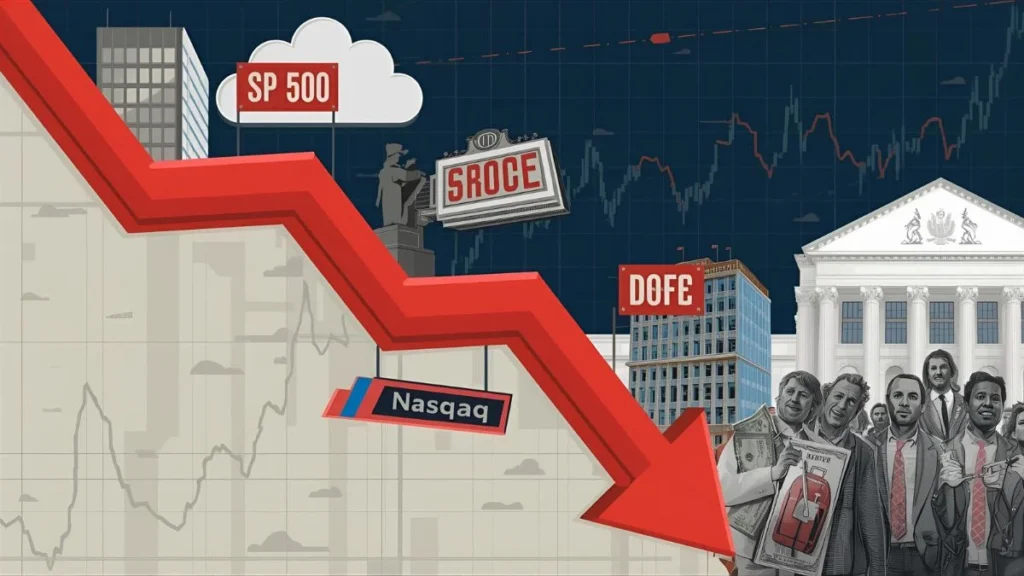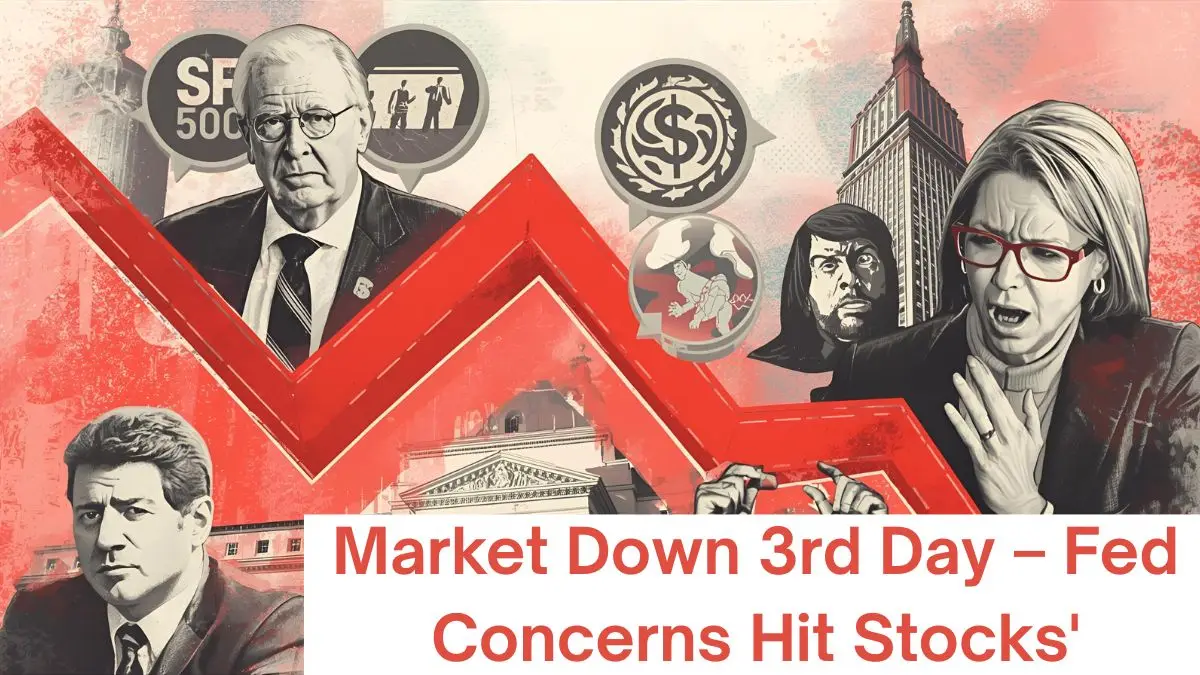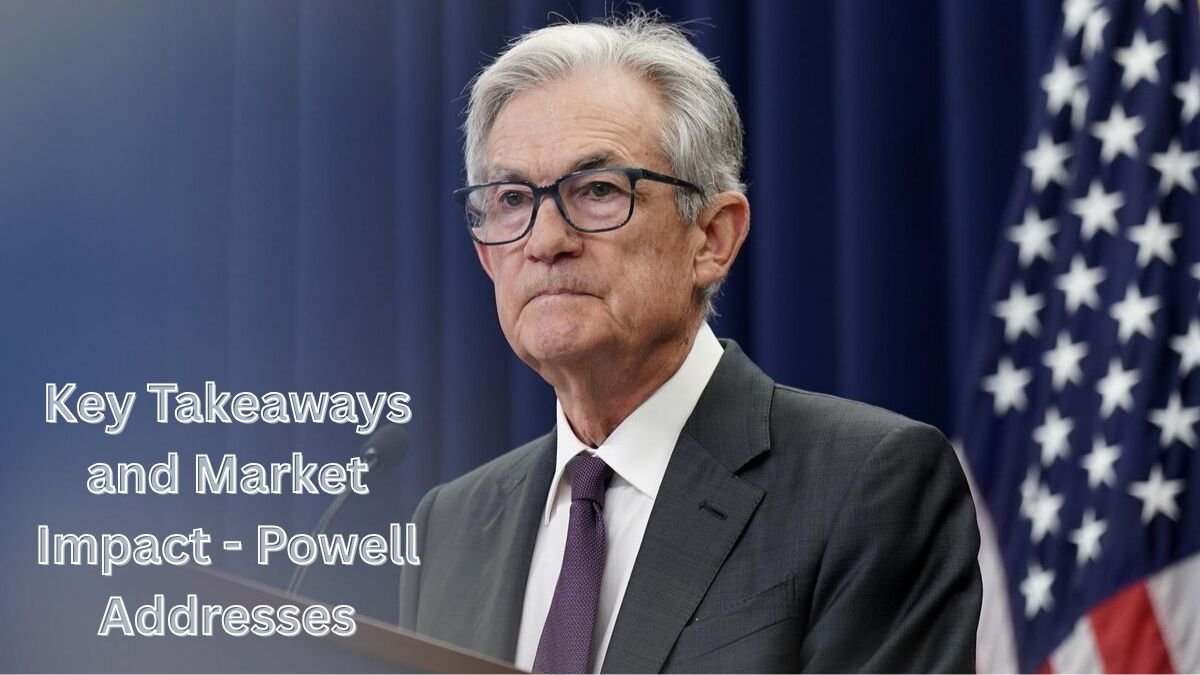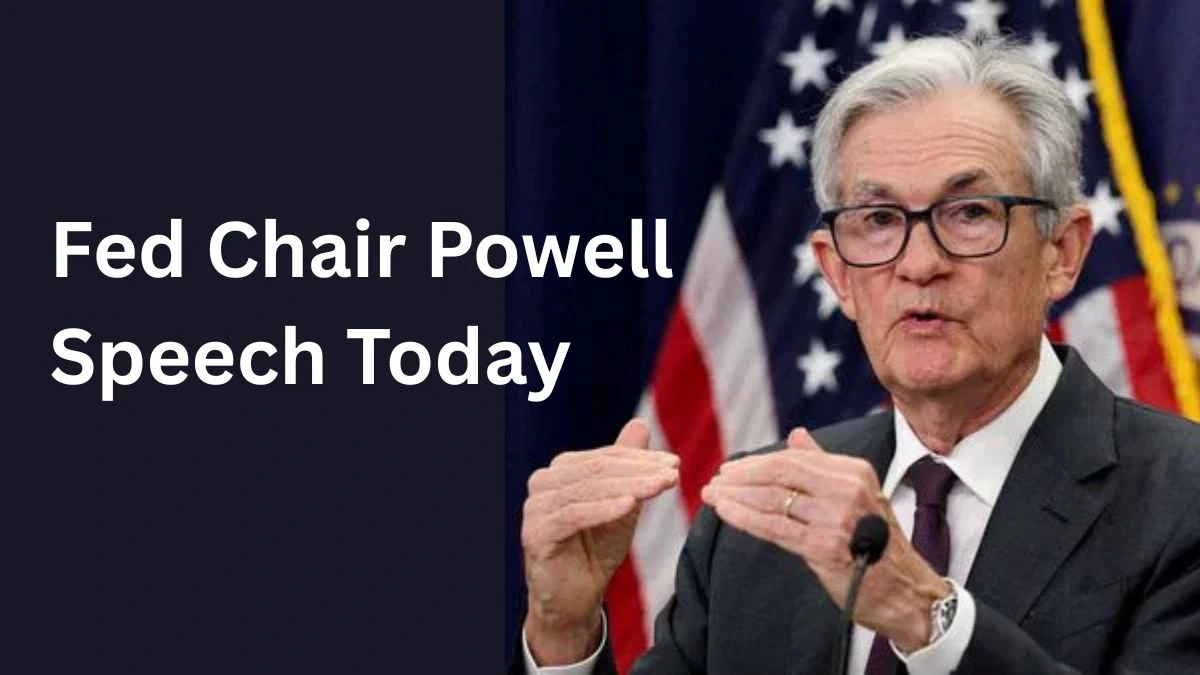Why Is the Market Down Today: Major U.S. stock indexes are headed for a rare three-day losing streak on Thursday, September 25, 2025, as concerns about elevated valuations and Federal Reserve policy uncertainty continue to weigh on investor sentiment. The S&P 500 fell 0.6%, the Dow Jones declined 99 points, and the Nasdaq dropped 0.9% in morning trading, marking the longest consecutive decline since early March 2025.
Primary Drivers Behind Today’s Market Decline
1. Powell’s Valuation Warnings Echo Through Markets
Federal Reserve Chair Jerome Powell’s comments earlier this week about stocks being “fairly highly valued” continue to create unease among investors. During his speech in Providence, Rhode Island on Tuesday, Powell expressed concern that asset prices, particularly risky equities, appear overextended by multiple measures.
Market impact (Why Is the Market Down Today?): Technology stocks have been particularly affected, with the Nasdaq leading declines as investors reassess artificial intelligence valuations that have driven much of 2025’s rally.
2. Strong Economic Data Complicates Fed Rate Cut Expectations

Thursday’s economic releases showed surprising strength, potentially reducing the likelihood of aggressive Federal Reserve rate cuts:
- Weekly jobless claims dropped to 218,000 from 232,000, well below expectations of 233,000
- Second-quarter GDP was revised upward to 3.8% annualized growth, exceeding the previous estimate of 3.3%
- Durable goods orders showed recovery, driven by increased aircraft orders
Investor concern: Strong economic data typically reduces the urgency for Fed rate cuts, which have been a key driver of the recent market rally.
3. AI Bubble Fears Intensify
Growing skepticism about artificial intelligence investments has created headwinds for tech-heavy indexes:
- Oracle (ORCL) continued declining after issuing bonds to finance AI buildout
- Nvidia (NVDA) and other AI-focused stocks extended losses for a third consecutive day
- Palantir (PLTR) received a bold downgrade from Redburn analyst with a $175 price target, implying 42% downside
Analyst perspective: Morgan Stanley’s Daniel Skelly noted concerns about the market’s “bubble-like” characteristics, particularly in technology sectors, though he believes current fundamentals don’t support crash scenarios.
4. Fed Policy Division Creates Uncertainty
Mixed signals from Federal Reserve officials have created uncertainty about the path forward for monetary policy:
- Dovish camp: Fed Governor Michelle Bowman argued for “decisive and proactive” action to address labor market concerns
- Hawkish concerns: Other officials worry about reigniting inflation with premature rate cuts
- Powell’s balance: The Fed Chair has avoided taking clear sides, emphasizing data dependency
This division has tempered expectations for two additional rate cuts this year, reducing a key market support factor.
Technical and Sentiment Factors
Market Breadth Concerns
Data from Charles Schwab shows that only 17% of S&P 500 stocks outperformed the index over the past three months, highlighting the narrow leadership driving market gains. This concentration in a few mega-cap names makes the market vulnerable to sector-specific selloffs.
Profit-Taking After Record Highs
Following Monday’s record highs across major indexes, investors are engaging in natural profit-taking. Technical analyst Frank Cappelleri from CappThesis notes this appears to be a “typical pullback” after the market reached overbought conditions.
Historical context: Over the past 50 years, bull markets have averaged eight years in duration, and the current rally that began in October 2022 is approaching its third anniversary.
Sector Performance and Individual Stock Stories
Energy Provides Bright Spot
The Energy Select Sector SPDR (XLE) advanced 1.3% as WTI crude oil prices continued rising on supply concerns. Copper prices also rallied following mine accident concerns at Freeport-McMoRan.
Corporate Earnings Disappointments
CarMax (KMX) plunged 12% in premarket trading after reporting Q2 earnings of $0.75 per share versus expectations of $1.03, with CEO Bill Nash calling the quarter “challenging”. The miss raised broader concerns about consumer spending patterns.
Upcoming Catalysts
Costco (COST) reports earnings after market close Thursday, representing the biggest earnings report of the week. Analysts will focus on same-store sales growth and membership trends amid economic uncertainty.
Fed Officials’ Upcoming Speeches
Thursday features additional Federal Reserve commentary that could influence market direction:
- Fed Governor Michelle Bowman is scheduled to speak
- Fed Governor Michael Barr will address the public
- Chicago Fed President Austan Goolsbee provided morning commentary
These speeches come ahead of Friday’s release of the Personal Consumption Expenditures (PCE) index, the Fed’s preferred inflation measure.
Government Shutdown Risk Adds Uncertainty
The White House Office of Management and Budget has instructed federal agencies to prepare workforce reduction plans if Congress fails to fund the government by September 30. This political uncertainty adds another layer of market concern as the fiscal year-end approaches.
What Investors Should Watch
Key Economic Data This Week
- Friday’s PCE inflation report: Critical for Fed policy expectations
- Existing home sales data: Gauge of housing market health
- Personal consumption figures: Consumer spending trends
Market Technical Levels
- S&P 500: Testing support after pulling back from record highs
- Nasdaq: Leading declines amid tech sector rotation concerns
- VIX: Volatility index declined 2.8% to 16.18, suggesting modest fear levels
Fed Policy Timeline
Markets are recalibrating expectations for rate cuts, with traders now pricing in less aggressive easing than previously anticipated. The upcoming PCE report will be crucial for determining whether the Fed maintains its measured approach to policy normalization.
The current three-day losing streak represents a healthy consolidation after the market’s relentless advance to record highs. While concerns about valuations and Fed policy create near-term headwinds, strong economic fundamentals and corporate earnings growth continue supporting the longer-term bull market thesis. Investors should monitor Friday’s inflation data and upcoming Fed commentary for clearer direction on monetary policy and market trajectory.
Read also:







